Pho and ramen are among the well-known Asian dishes that have a considerable spotlight on the international culinary stage. However, in western countries like the US, a large number of people fail to distinguish between these two kinds of noodles.
I found this a major surprise since these two popular noodles are quite distinctive in both flavors and how they are cooked. Both carry the essence of their original cuisine and, thus, are the best representatives of their culinary cultures.
Without further ado, let’s break down each dish and look into the facts to know what makes them unique.
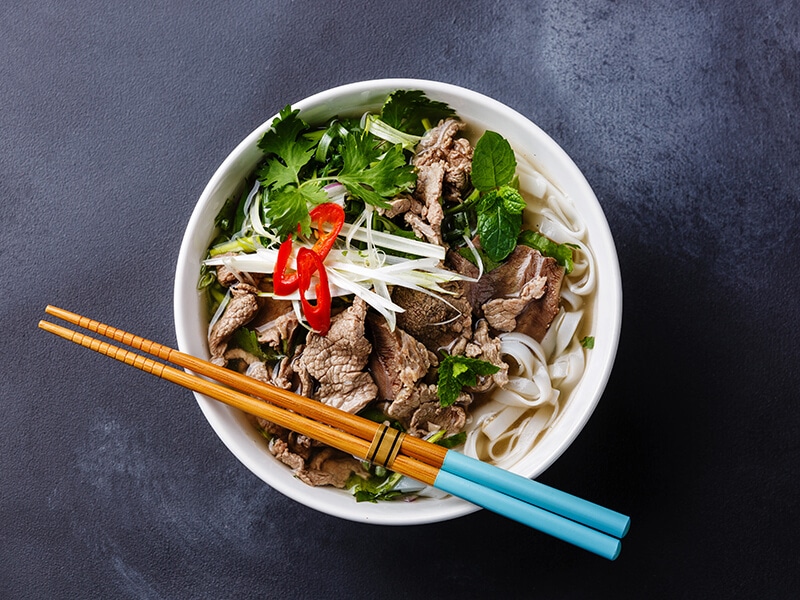
The Story Of Pho
Have you ever wondered where Pho is from and how it has got so much love from people all around the world? Here is the story of Pho from its beginning.
History Of Pho
The origin of Pho dates back to the early 20th century in Northern Vietnam. Pho made it to all parts of the world with refugees after the Vietnam War.
Even though Pho is a traditional Vietnamese dish, most sources say it was inspired by Chinese noodles and French cooking. The most plausible theory is that Pho appeared in Northern Vietnam between 1900 and 1907.
The development of Pho was due to the availability of beef in the region during times of French colonization. The dish was originally served to the people of the working class by roaming vendors.
After the Vietnam War, this Vietnamese noodle soup traveled with the refugees to many parts of the world. Pho restaurants have emerged in many countries in the west, thus gaining popularity worldwide up until now.
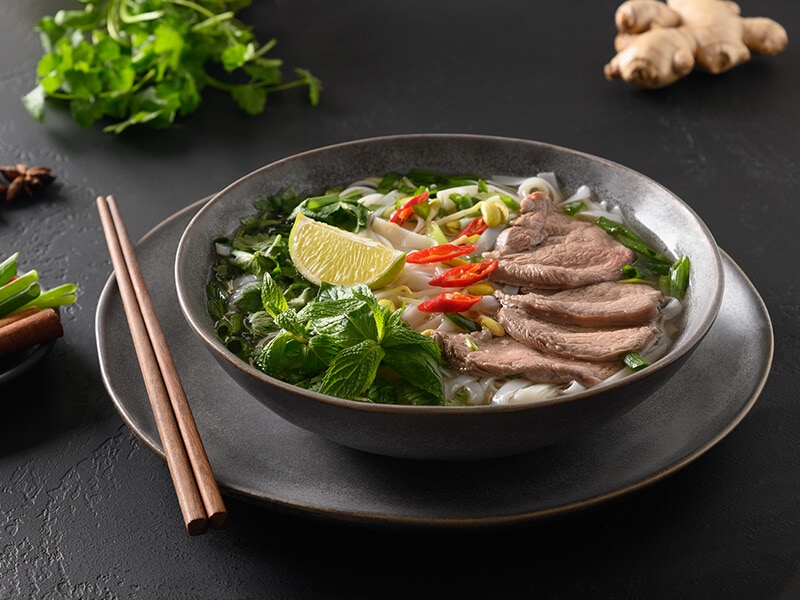
What Is Pho?
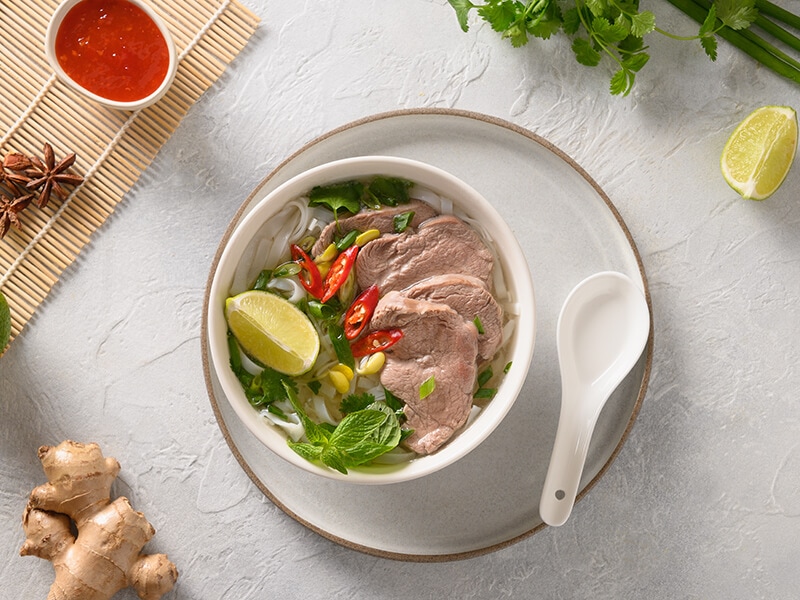
Pho is a Vietnamese noodle soup dish consisting of rice noodles, broth, herbs, vegetables, and meat (usually chicken or beef). Not all Pho tastes the same in different restaurants. This is due to the fact that people have invented countless ways to cook Pho.
The unique part of each kind of Pho lies in its broth. The recipe to cook distinguished Pho’s broth is the family’s top secret and should never be leaked to an outsider. In Vietnam, restaurants with family recipes often make a great fortune through generations (1).
Make your own savory Pho at home with this simple recipe.
Popular Kinds Of Pho
Pho has plenty of regional variants, mainly divided into the northern and the southern version. The key differences lie in the way Pho is cooked and served.
Northern Pho (Pho Bac)
Pho in the north uses flat noodles with a lighter taste. This is because Pho restaurants in the north use fewer spices and herbs, producing a lighter and less fatty soup base than beef. North people usually pair their Pho with bagel twists, pickled garlic, and spring onion.
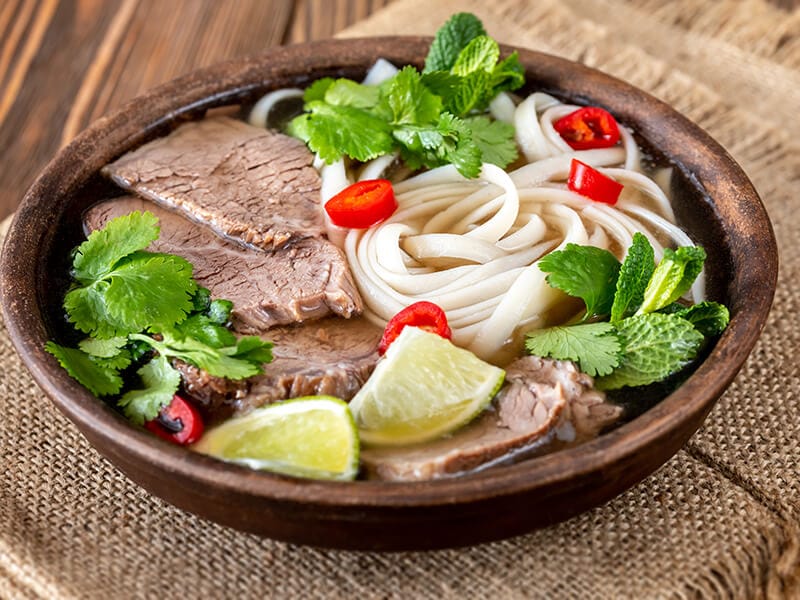
Southern Pho (Pho Nam)
The noodles in a bowl of southern Pho are thicker. The meat used in southern Pho is usually beef with many styles and parts, such as rare steak, brisket, meatballs, tripe, and tendons, which makes it bold and fattier.
Besides, the accompanying vegetables and spices in southern Pho are served on a different plate with bean sprouts, chili, lemon, chili, and hoisin sauces. Some restaurants also serve egg yolk soup as a side dish.
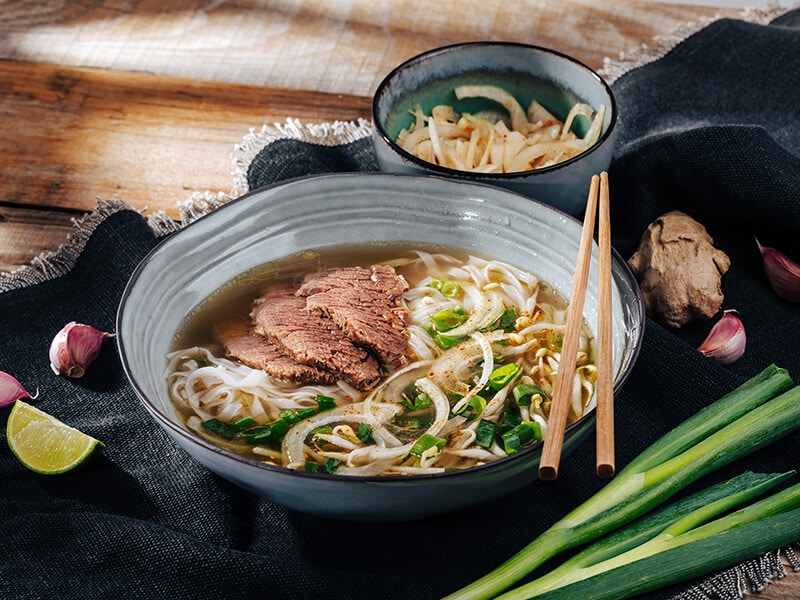
Ramen
Ramen is in no way a modern dish. This noodle dish is an important part of Japanese culinary culture as it appeared hundreds of years ago. Here is a brief history of this popular Japanese dish.
History of Ramen
Just like Pho, the origin of ramen is not very clear. Most people believe that the original idea belonged to Chinese immigrants who came to Japan to sell noodles on the street in the 1900s. People say “ramen” emerges from a Chinese noodle called “lamian”.
In the late 1950s, Momofuku Ando invented instant ramen, which allowed people to have a delicious hot bowl of ramen in short minutes just by adding hot water. Instant ramen later gained popularity all around the globe.
In the 1980s, ramen became an icon of Japanese cuisine culture. Despite the major success of instant ramen worldwide, Japanese people still highly favor traditional ramen (2).
Nowadays, ramen is one of the most popular foods in Japan. Ramen restaurants are erected everywhere in big cities, some of which even have Michelin stars. People in the west have grown increasingly fond of ramen after realizing it’s a healthy, tasty, and cheap dish.
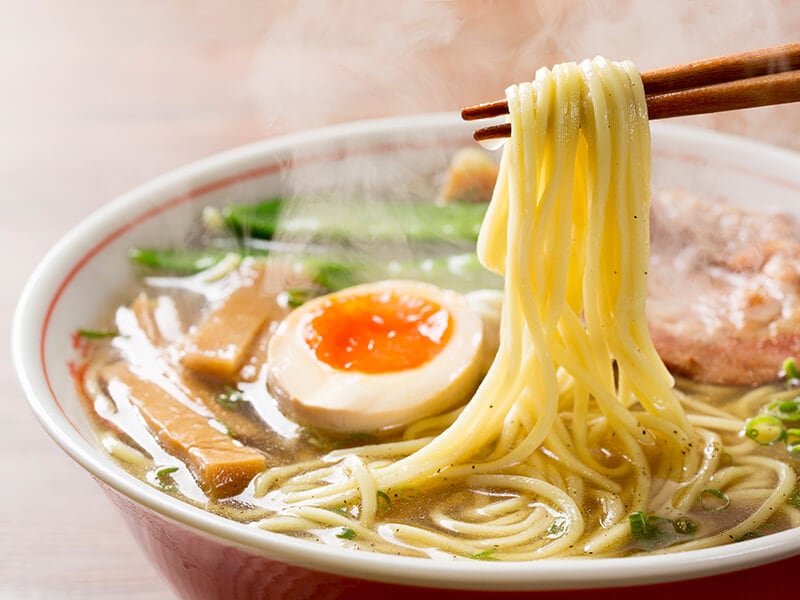
What Is Ramen?
Ramen is a traditional Chinese noodle soup consisting of wheat noodles in a savory broth. Ramen comes in many flavors, some popular kinds of which are miso and soy sauce. A bowl of ramen usually includes braised pork, a soft-boiled egg, seaweed, and mushroom.
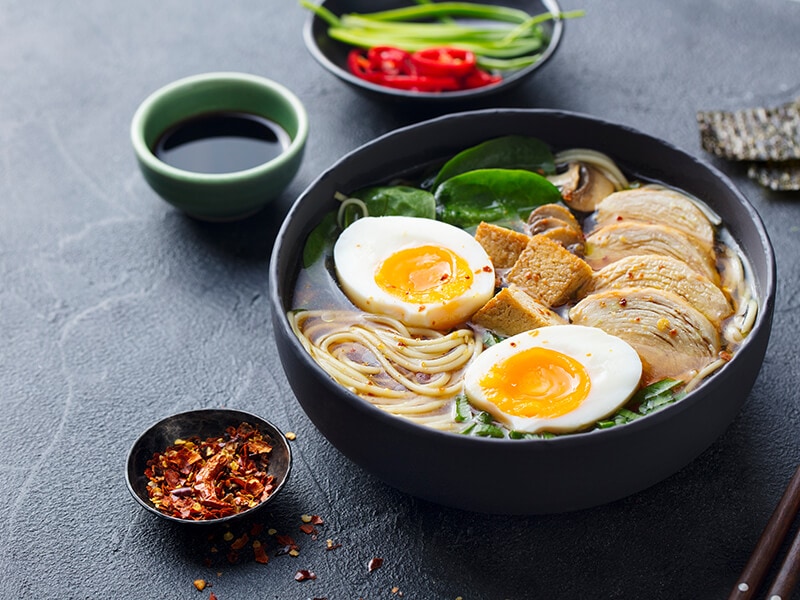
Common Types Of Ramen
There are four main types of ramen noodles: shio, shoyu, miso, and tonkotsu. They are distinctive in the ingredients used and how the broth is flavored.
Learn this easy recipe to cook savory ramen bowls for your family.
Shio Ramen
Shio means salt in Japanese, which implies that shio ramen’s broth is salty. The broth is made with chicken or seafood, vegetables, and salt. This is one of the oldest ramen broths in the history of ramen.
Shio ramen broth’s colors range from pale to golden depending on the ingredients used and their proportion. This ramen tastes much cleaner and less fatty than other ramen types.
The noodles are topped with sliced chicken chashu, ramen eggs, and seasoned bamboo shoots.
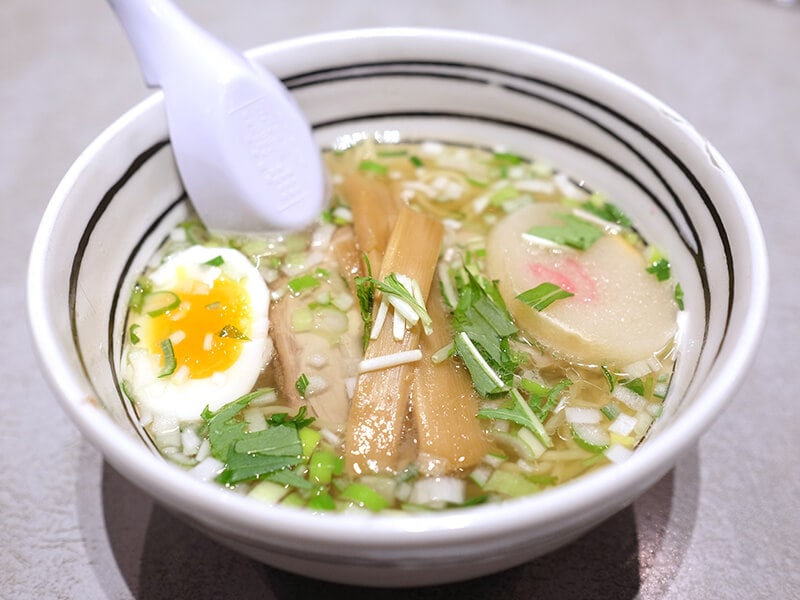
Shoyu Ramen
Shoyu ramen, also known as soy sauce ramen, is the most common kind of ramen. As the name suggests, the broth of this ramen contains soy sauce which gives it a deep and rich taste.
Soy sauce is simmered along with all the broth’s ingredients to kick up the flavor. It also gave the broth a darker color. Shoyu ramen uses curly and springy noodles with slices of pork, fish cakes, scallions, and soft-boiled eggs as the toppings.
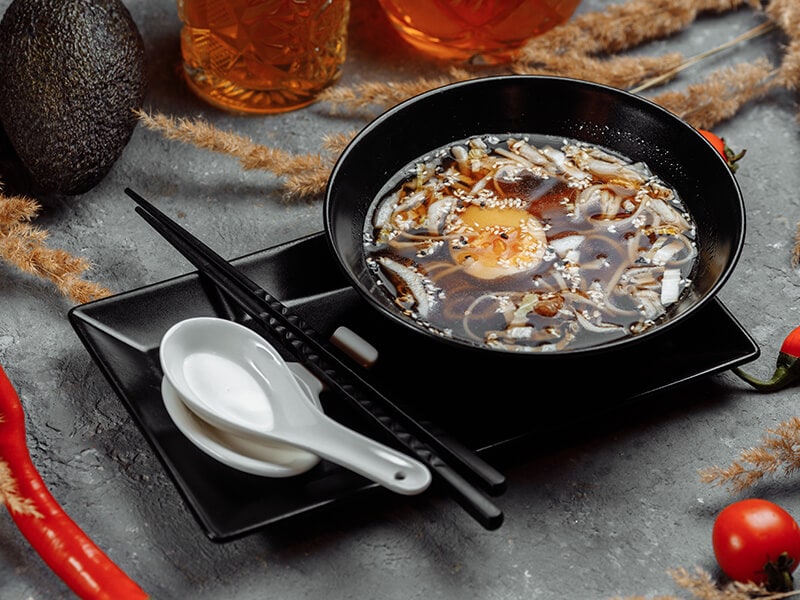
Miso Ramen
In miso ramen, people add miso paste in the clear broth, hence the name. Miso paste is a fermented soybean paste. The tangy flavor developed in the process of fermentation. Miso paste gives the broth a sweet-tangy taste with a thick texture.
The sweetness in miso ramen is from various other ingredients added to the soybeans during fermentation. This kind of ramen is usually served in northern Japan.
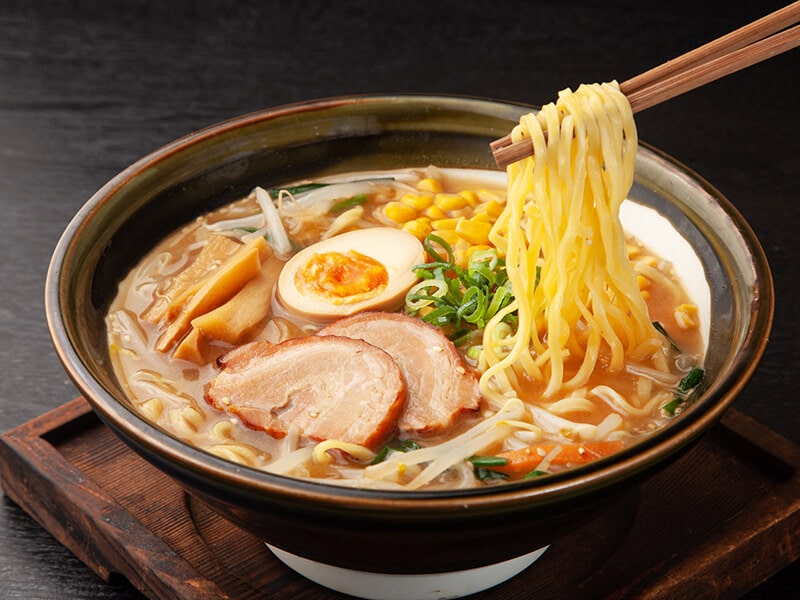
Tonkotsu Ramen
As in the name (tonkotsu means pork bone), tonkotsu ramen is made with pork bones, pork chock, and trotters. This ramen broth has an opaque and milky color. People boil these ingredients for many hours until the substances break down into the broth.
Collagen in the bones and tendons around the bones is what makes the base distinctively dense and thick. Fat and collagen in the broth explain the milky color.
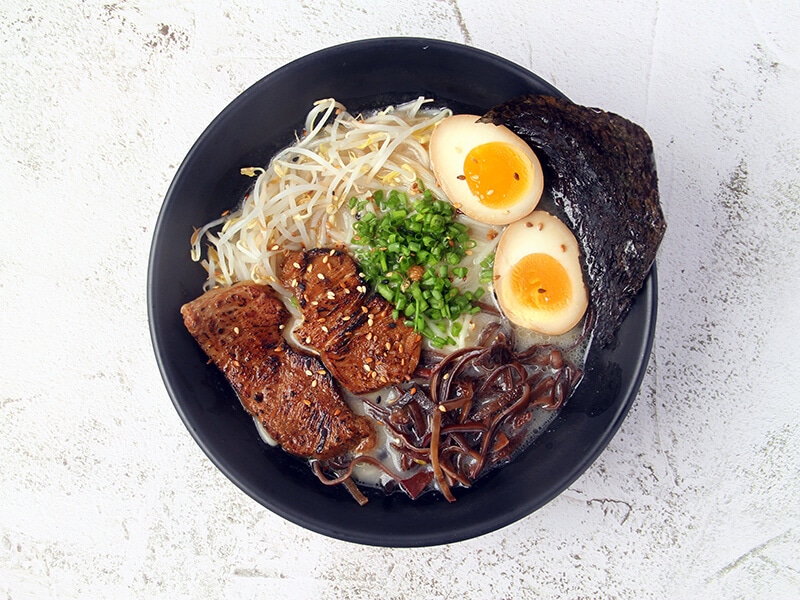
Similarities Between Pho And Ramen
Although coming from different cultures, Pho and ramen have many similarities due to both being influenced by Chinese cuisine. Despite having different ingredients, Pho and ramen share many things in common.
Both are soup noodles, with the general theme consisting of meat, noodles, vegetables, and herbs like spring onion soaking in a fatty and savory broth.
The broth of both dishes contains a lot of ingredients and takes a long time to cook to make their ingredients break down into the broth.
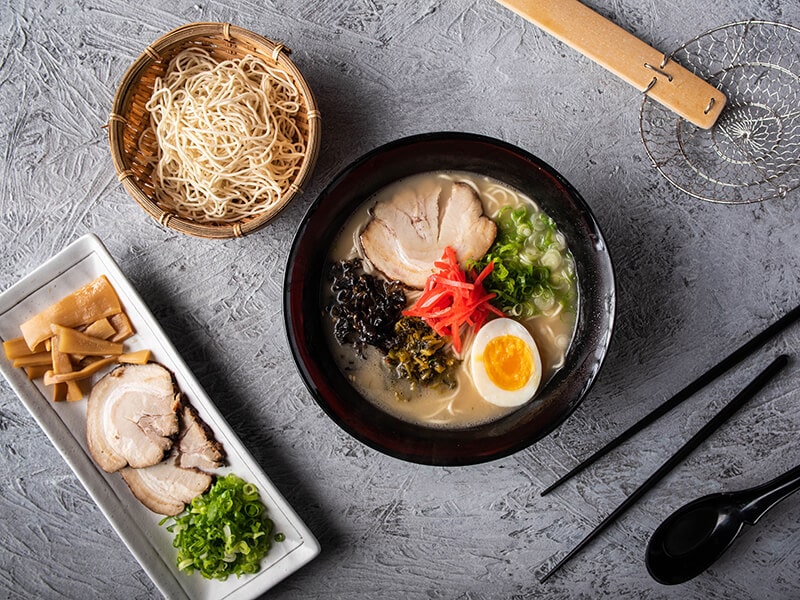
What Sets Pho And Ramen Apart?
Pho and ramen have some core differences ranging from the ingredients, cooking method, flavor, and broth. Here is a brief table for you to compare these two dishes.
Broth
A typical Pho broth is made from chicken broth or beef bones. The choice of herbs is what makes some recipes stand out from others. The basic recipe consists of onion, coriander, fennel seed, cloves, cinnamon, onion, garlic, and star anise.
All the above ingredients are slow-cooked in a large stock pot to produce a broth. The Pho broth tends to be light and fresh with some fatty content. It takes 6-12 hours to complete the simmering process.
On the other hand, the ramen soup base is from simmering pork bones, chicken bones, anchovies, and dried bonito. Additional flavors are soy sauce in the case of shoyu ramen and miso paste in the case of miso ramen. Ramen is umami loaded!
Some kinds of ramen broth, like tonkotsu, are thick and cloudy, which also comes with a stronger taste than Pho. It takes between 16 and 18 hours to finish simmering the broth in ramen. After that time, almost all the contents in the broth have broken down into the water.
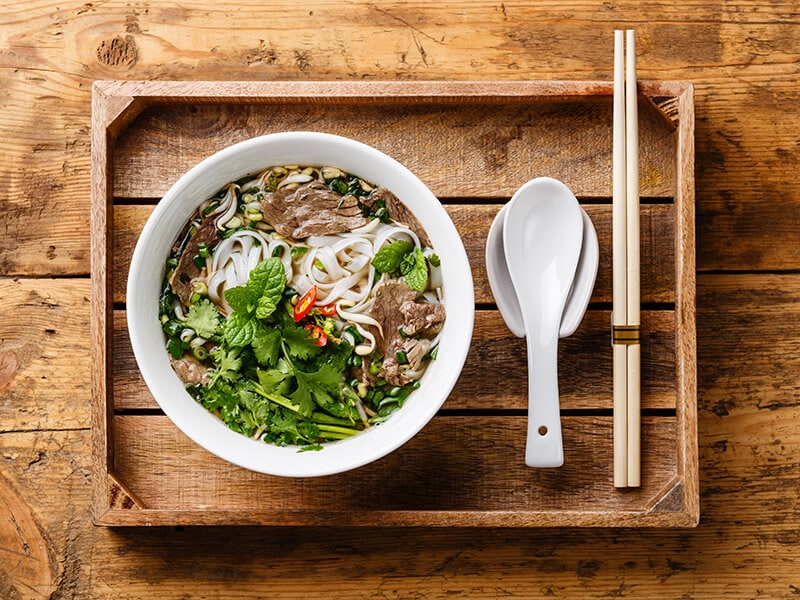
Noodles
The noodles are also different in both dishes. Pho comes with rice noodles that are made from rice and water, while ramen noodles are made from wheat flour.
There is also a special ingredient in ramen, which is kansui. It’s a type of mineral water that creates the firm texture of the broth. It gives a yellowish color and elastic texture to the noodles. Without kansui, the noodles are no longer ramen noodles.
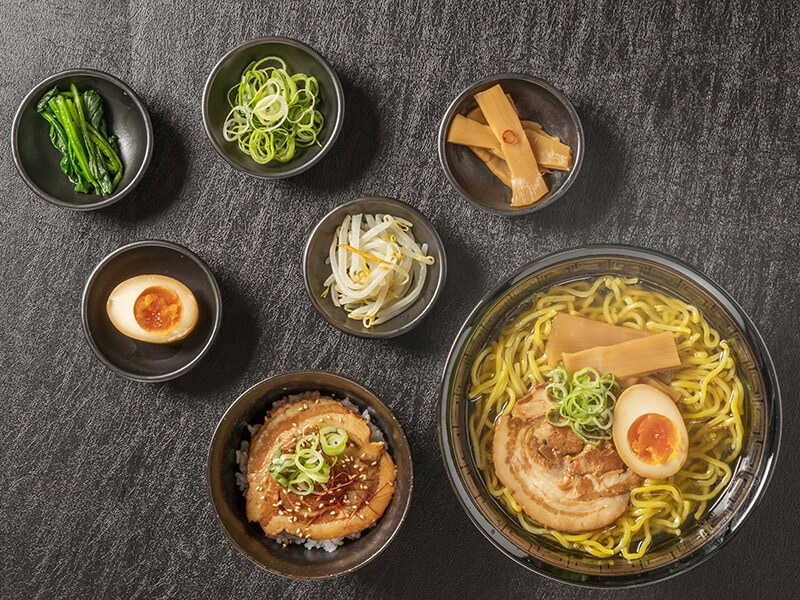
Order Options
When you go to a Vietnamese Pho restaurant, you can choose the type of Pho broth. Typically, it can be either chicken or beef broth.
With Pho, people don’t cook the beef beforehand. When you order a bowl of Pho, the cook will cut the beef into thin slices and dip them into the boiling broth.
You can choose toppings from the menu to go into your bowl, including rare beef, chicken, beef meatballs, brisket, tripe, and tendons.
When you go to a ramen stall, you can consider various options for your order. For instance, you can order cha-shu-men with an extra pork slice, ajtama ramen with a boiled egg, or kikurage ramen with extra mushrooms. Meat slices in ramen are also thicker.
You can also choose the thickness of the broth or how oily it will be. The firmness of noodles is also an option for you to pick.
Learn how Pho and ramen are so distinctive and delicious in their own way.
How Pho And Ramen Look When Served
If you order a bowl you Pho in a restaurant, you can see a variety of toppings that sometimes cover the whole bowl. Slices of beef, chicken, beef meatballs, brisket, tripe, tendons, herbs, and vegetables make up a very colorful and mouth-watering bowl of Pho.
With ramen, you usually have thick slices of fried or roasted meat, a soft-boiled egg, seaweed, and scallion scattered on top.
On serving Pho, the waiter will bring a plate of various vegetables and herbs along with your bowl. The additional seasonings, such as fish sauce, hoisin sauce, and chili, lie ready on the table. You can freely add them to your bowl without extra charge.
On the other hand, ramen doesn’t come with extra vegetables or seasoning on the serving. Regarding additional flavors, you can add lime, chili, and fish sauce to your Pho.
For ramen, flavors are predetermined in the cooking process. People add soy sauce, miso, and salt to make ramen more diverse in taste.
Ramen allows for more customization than Pho. There are plenty more ingredients you can put into your ramen, such as boiled eggs, green onions, sprouts, corn, roasted pork, and so on.
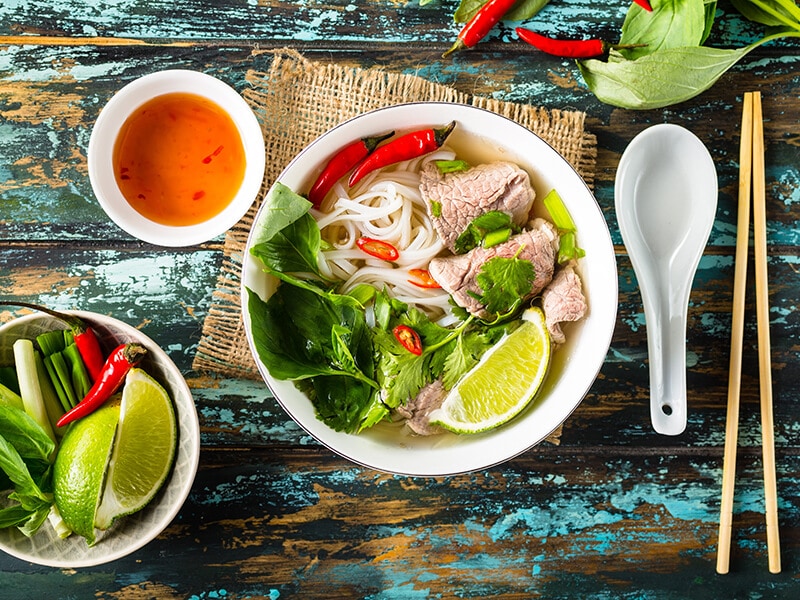
FAQs
Now that you have learned the differences between Pho and ramen, you can get your useful knowledge from this FAQs section. Here are some common questions regarding Pho and ramen:
Don’t Miss Your Chance To Try Both Dishes!
While these savory soups have a lot of things in common, they come with special flavors and textures. Both kinds of noodle soup are slurp-worthy and hearty.
The umami taste of the broth and the combination of ingredients make them perfect on their own. After all, I cannot just say Pho or ramen is better because it depends on personal taste. You should try both to decide for yourself.
Hope you have the best experience with these heaven-sent noodle soups, and feel free to leave your thoughts about them. Finally, don’t forget to like and share to introduce this content to other food lovers!
References
- Pho (2022) Wikipedia. Wikimedia Foundation.
- Brown, M. (2022) Ramen: A tangled history of Japan’s unlikely National Dish (Asian 258 ), Chinese Food History. Chinese Food History.


Jamie Scott
Editor in Chief, Senior Content Writer
Expertise
Home Cooking, Meal Planning, Recipe Development, Baking and Pastry, Food Editor, Cooking-video Maker, Western Food Evaluation Expert
Education
Le Cordon Bleu College of Culinary Arts
Local Community College, New York, NY
Jamie Scott is a skilled culinary expert and content creator specializing in Western cuisine. With over 15 years in the culinary field and formal training from Le Cordon Bleu, Paris, Jamie deeply understands how to blend nutrition with delicious flavors. His passion for cooking matches his commitment to making healthy eating accessible and enjoyable.
On Fifteen.net, Jamie brings a fresh perspective to classic dishes and beverages, offering readers insightful recipes, cooking tips, and a fresh view on meal planning that emphasizes taste, health, and simplicity.